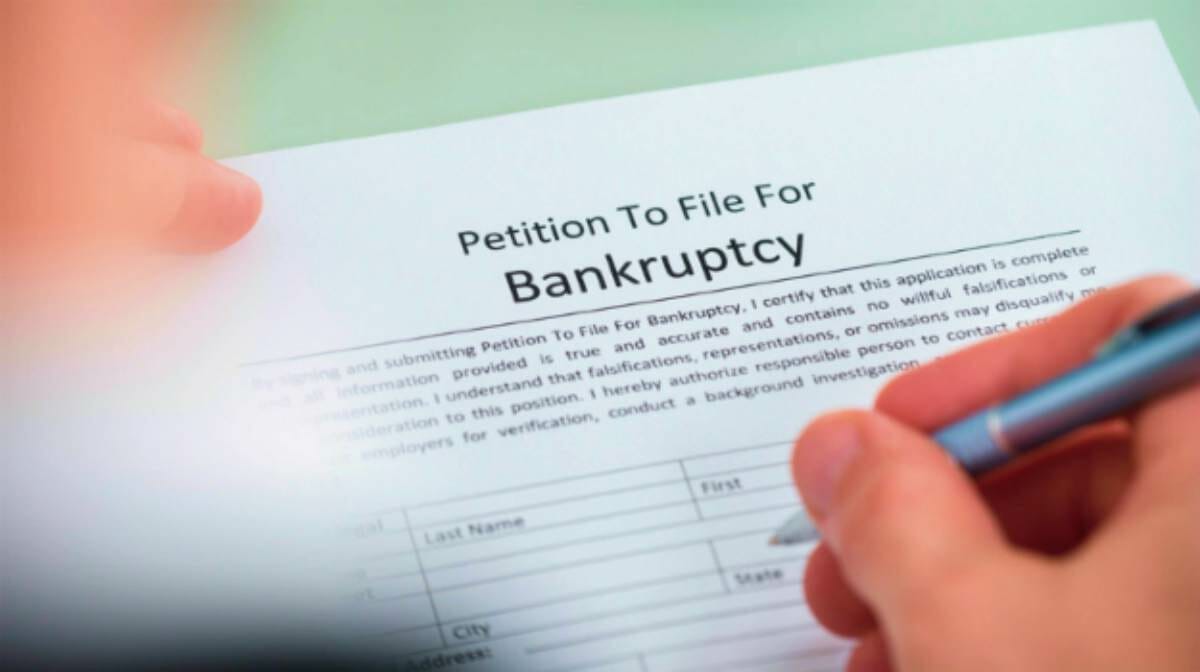Paying taxes late can spiral into an endless void of fees, and sometimes debt relief is the only option available for people to get back on track.
In this article:
- Avoid Debt Relief Scams
- Postpone IRS Tax Settlement with Getting the Not Currently Collectible Status
- Reduce Tax Debt through an Offer in Compromise
- Schedule an IRS Settlement Program with an Installment Agreement
- Negotiate IRS Debt Through a Partial Payment Installment Agreement
- File for Bankruptcy
- Improve Debt Relief Through Penalty Abatement
- Avoid Wage Garnishment
- Find More Efficient Funding Through Low-Interest Loans
9 Debt Relief Techniques to Jumpstart Financial Recovery
1. Avoid Debt Relief Scams
Just like any financial offer, if it is too good to be true, then it probably is fake.
The Federal Trade Commission, which handles the protection of consumers, has warned the public of the many scams that plagued the economy.
For example, the FTC has charged Debt Pro 123 LLC with selling bogus debt relief. The FTC imposed a fine on the said company, which milked customers almost $10,000 from consumers and gave false advice.
How do you spot a financial scam that can ruin you?
If the debt relief provider asks for a fee or payment before doing their work, you may have chanced upon a fake provider. Also, if the company suggests that you stop contacting the IRS or other people you owe money, run away as fast as you can.
Lastly, if the provider promises ludicrous and hopeful results like paying pennies for every dollar you owe, chances are that you are talking with a predator.
A reliable provider usually has accreditation from the Better Business Bureau. For branches, make sure that they have the necessary permits to operate in the state.
If you found a debt relief company that you think is trustworthy, do not decide on the get-go. List down at least three more options to have peace of mind.
Lastly, always do your due diligence. Ask for references from people you know.
Do a google search for the best debt relief provider near you and then read the reviews.
Decide whether or not you will talk with a provider, or will start planning and doing techniques that will help you with your tax relief.
For a more in-depth discussion of how debt relief companies help debtors, This Free Guide to the cost of tax relief companies can help, particularly for those with debt due to unpaid taxes.
2. Postpone IRS Tax Settlement with Getting the Not Currently Collectible Status
When a person gets the Not Currently Collectible Status (CNC), the IRS no longer sends demand letters as well as stops imposing fines and penalties.
Usually, the IRs grants this status to taxpayers who have not paid their taxes for 1 or 2 years. Also, the taxpayer usually is experiencing financial hardships, which is another issue that the IRS investigates.
Remember, A CNC Status does not mean that the IRS will forgive and forget your delinquent taxes. The IRS only provides delinquent taxpayers respite from whatever financial difficulties they are undergoing at the time.
For those who want to postpone the payment of their tax debt, they must fill out Form 433A. This form informs the IRS about your current economic standing.
The IRS uses the data provided to decide whether or not you qualify. The granting of the CNC status is not automatic and still needs deliberation.
A more in-depth resource is in the IRS Part 5.16 Resource Page. Usually, the IRS grants around a year or two of tax postponement.
3. Reduce Tax Debt through an Offer in Compromise
If what you need is a lesser debt and not an extension of time, then an Offer in Compromise (OIC) will be of help to you.
You fill out the Form 656 Booklet which informs the IRS about your current financial standing among other important things. There is currently a $186-application fee, which is non-refundable.
The IRS applies the fee to the debt if the IRS accepts your OIC.
By this time, you most likely have a federal tax lien already in your record since the IRS has demanded the debt. You may ask the IRS to remove the said lien, which can affect your credit score positively in the long run.
You can negotiate with the IRS directly to know what is your new debt amount. In most cases, you send in an offer.
If the IRS does not reply to your offer, the offer is automatically valid and accepted.
More in-depth information about OIC is in the IRS Offer in Compromise Page.
4. Schedule an IRS Settlement Program with an Installment Agreement
If you only need to schedule to pay your debt, then you can ask the IRS to have an Installment Agreement.
There are three main types of installment plans, other than the lump sum most taxpayers do.
The common method is the Short-term payment plan. In this system, the taxpayer pays the whole amount in 120 days or less.
Another method is through an automatic long-term payment plan. In this agreement, the taxpayer pays a small fee and automatically pays an amount for more than 120 days from their checking account.
Lastly, the same long-term payment plan is available, but the payment method is through a mailed IRS electronic direct pay or a debit/credit card. The fee in this method is slightly larger than the previous methods.
The IRS accepts the Long-term installment plans if the debt is $50,000 or more.
Fees and other recurring expenses change with time as the IRS promulgate new regulations. More information is in the IRS Resource Page for Installment Agreement.
RELATED: FAQs On Tax Debt Relief
5. Negotiate IRS Debt Through a Partial Payment Installment Agreement
If you owe more than $10,000 and have not declared bankruptcy, the IRS can give you a Partial Payment Installment Agreement (PPIA).
The IRS will lower your debt and then give you an installment plan that considers your economic condition. Generally, you only pay a set amount monthly, and after the agreed upon period, the IRS forgives the rest of your debt.
The Offer in Compromise (OIC) and the Partial Payment Installment Agreement (PPIA) are exclusive. You can only choose between them, and once you applied for one, you can no longer apply for the other.
You will use the same Form 433-A found in the OIC booklet. The form provides the necessary information for the IRS to decide whether or not you are encountering financial difficulties.
6. File for Bankruptcy
Considered as the last resort for most debtors, bankruptcy can free taxpayers from most debts. However, recent tax responsibilities remain.
On the other hand, automatic stay applies after the filing of bankruptcy proceedings. The courts prevent the creditors from actively collecting the debt.
Applying for additional debt becomes more difficult, as a bankruptcy typically has a negative effect on your credit score. The bankruptcy decreases your credit score for 7 to 10 years.
If there are no other options, then declaring bankruptcy is the only solution. Always talk to a financial expert before going that route.
7. Improve Debt Relief Through Penalty Abatement
If you do have some cash but it’s not enough, you can apply for penalty abatement. Penalty abatement reduces or even eliminates all the penalties and fees attached to the debt.
However, you have to apply for it as the IRS does not automatically grant such requests.
For a more detailed guide, IRS penalty abatement fact sheet can help.
8. Avoid Wage Garnishment
Having your debt automatically deducted from your wages by the IRS can make budgeting a lot more difficult.
Debtors can avoid wage garnishment through mainly three means.
First is by applying for a payment plan from the IRS. You have to discuss with the IRS how to structure the payment plan to get better terms.
Usually, the IRS garnishes 70% or more of your wages, which is why a payment plan is better.
The second method is through an Offer in Compromise. Lastly, if the IRS deems that you are in financial hardship, the IRS usually stops wage garnishment.
More information about wage garnishment is necessary, as preventing or eliminating such an occurrence can help you solve your financial woes.
9. Find More Efficient Funding Through Low-Interest Loans
Penalties and the interest rate applied by the IRS to unpaid taxes are higher than most bank loans.
The two main penalties, failure to file and failure to pay, impose a 5% and .5% fee per month respectively. That by themselves are higher than what bank offer.
Two to three months of those IRS penalties are higher than the yearly interest of bank loans.
The IRS also applies 3% plus the federal short-term rate to the unpaid taxes.
By applying for a new loan to pay off a more burdensome loan, debtors cleverly manage their cash outflow. This decrease gives debtors a more efficient plan.
Tax debt relief can help debtors get back on their feet.
Sometimes, life throws us something that we cannot solve on our own. However, most debtors forget that there are more efficient solutions to their problems.
These nine suggestions may give you what you need to solve your debt woes. Use what is the most appropriate option and reap the benefits you deserve.
Do you know other debt relief options? Among these options, which do you think is the most efficient? Let us discuss in the comments sections below.
Up Next: Pros and Cons of Tax Debt Relief





